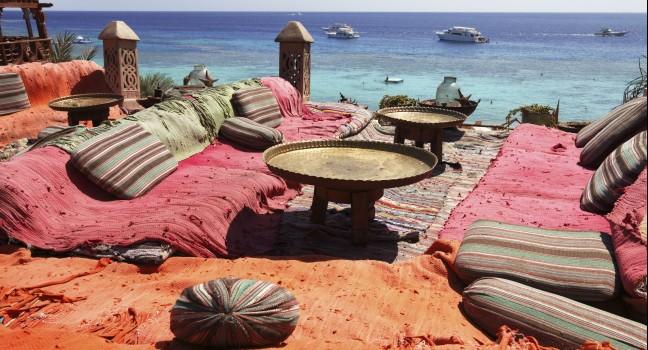
Sharm el-Sheikh Travel Guide – Expert Picks for your Vacation
In the mid-1980s, Sharm El-Sheikh, at the Sinai’s southern tip, had one hotel, two dive centers, and a snack bar.
Today this bustling little town has more than 160 hotels, with respective dive centers, malls, casinos, and restaurants, and more Europeans than Egyptians.
This exponential expansion marks the town as Egypt’s key resort in what marketers call the Red Sea Riviera. Indeed, Sharm, as it is fondly called, is known for having some of Egypt’s most lavish hotels, world-renowned dive centers, and nightlife galore.
In many ways the town is more than a little schizophrenic. It’s now a firm favorite for fun-in-the-sun singles, couples, and families, but every so often this small corner of the Sinai takes to the world stage when political leaders gather for summit meetings or peace talks related to Middle East issues.
The summit of May 2008 saw more than 150 world leaders—including President George W. Bush—and their associated entourages transform the town into a giant think tank.
Get rid of any preconceived notions of visiting a barren wasteland rich in archaeological sites and a simple desert lifestyle.
If your aim is to dive, snorkel, enjoy outdoor and water activities, or simply to lounge before you hit the nightlife scene, you’re in the right place. Sharm also makes a solid base for nearby desert sites, which can be visited on day trips.
There are four main areas within the vicinity of Sharm El-Sheikh. The most popular is known as Na’ama Bay, the central hub with the majority of the hotels, restaurants of various culinary merit, souvenir-filled shops, key nightspots, and excellent dive centers.
North of Na’ama Bay is the new district of Nabq, which has a handful of large resort hotels.
South of Na’ama Bay is Hadaba (the name means plateau), where the main highlight is the view of the surrounding area, and the number of hotels has been rising.
South of Hadaba, Sharm al-Maya is often called downtown Sharm El-Sheikh.
It’s set on the more down-to-earth Sharm El-Sheikh harbor, where the dive boats dock at night. Here are more hotels, as well as typically Egyptian ahwas (cafés) where men smoke shisha (water pipes) and play backgammon.
Sharm isn’t the place for sightseeing: the resorts don’t have any sights to see, though a National Museum complete with some ancient artifacts is expected to open in 2011.
It’s the seaside activities—windsurfing, parasailing, waterskiing, and diving and snorkeling—and side trips to the desert that make boredom an unknown quantity here.

Post Discussion